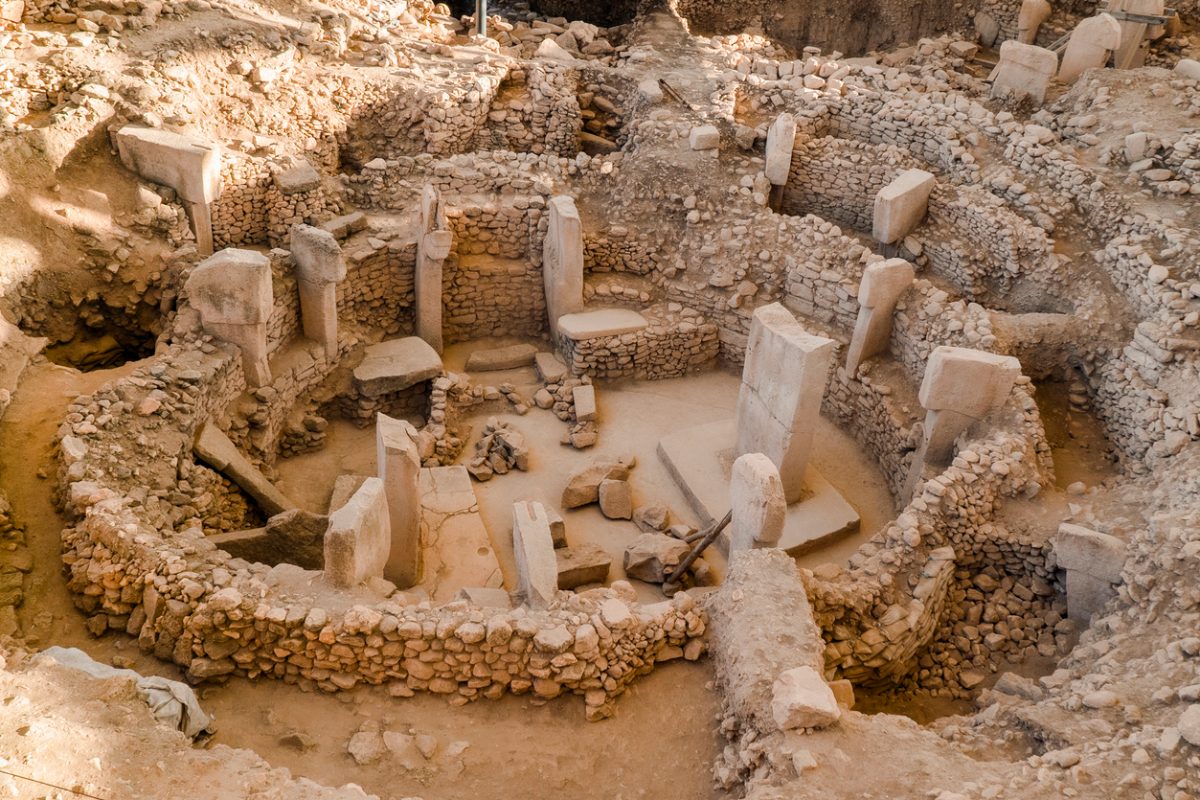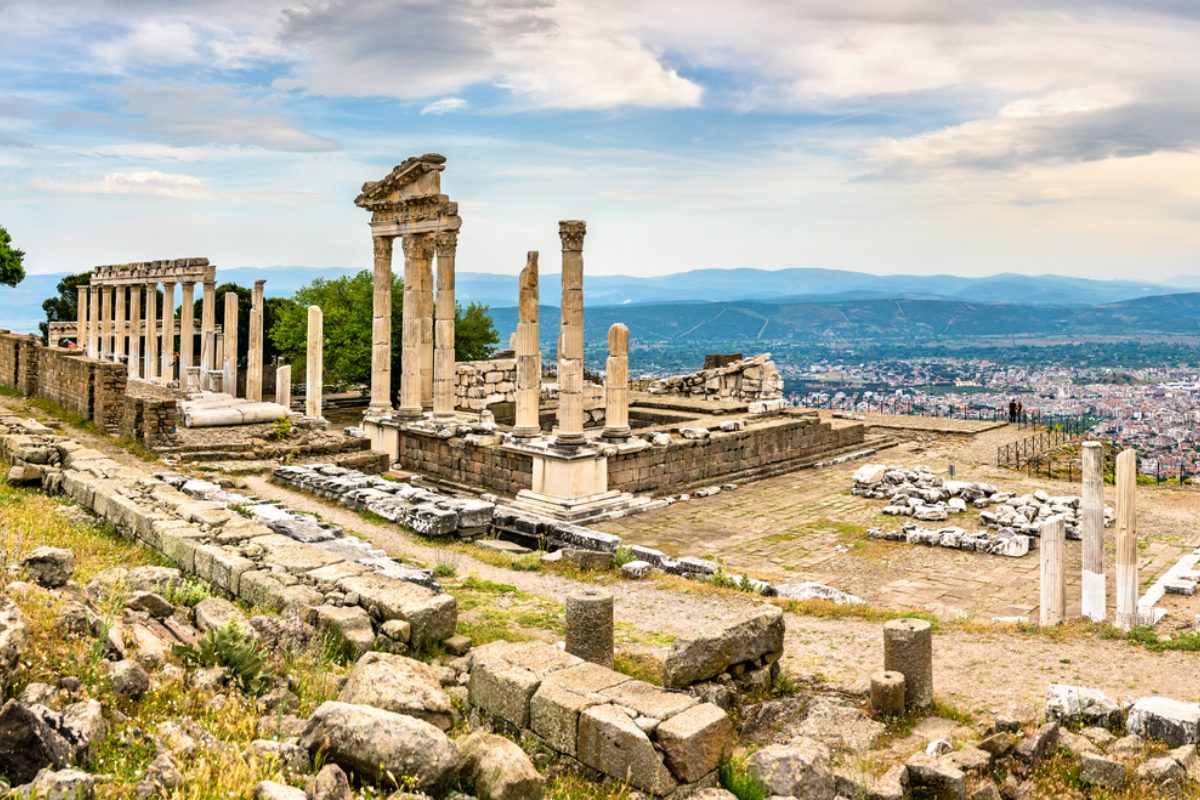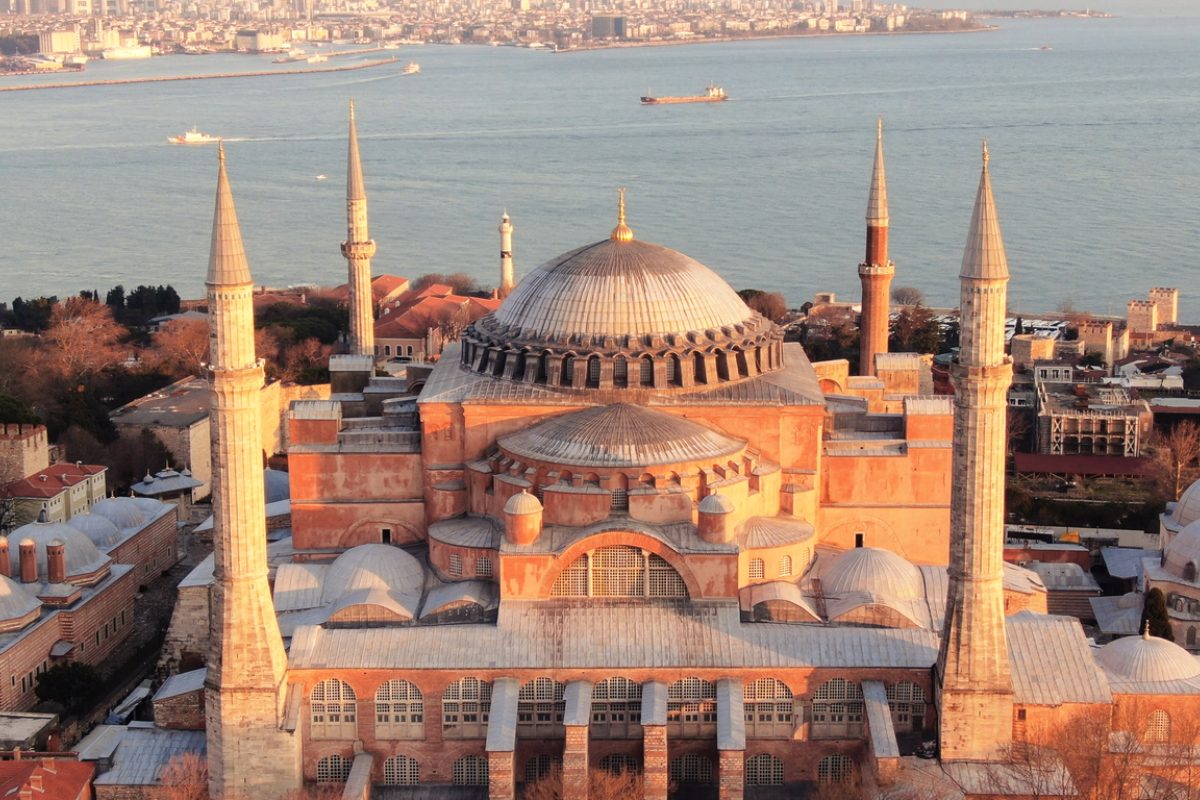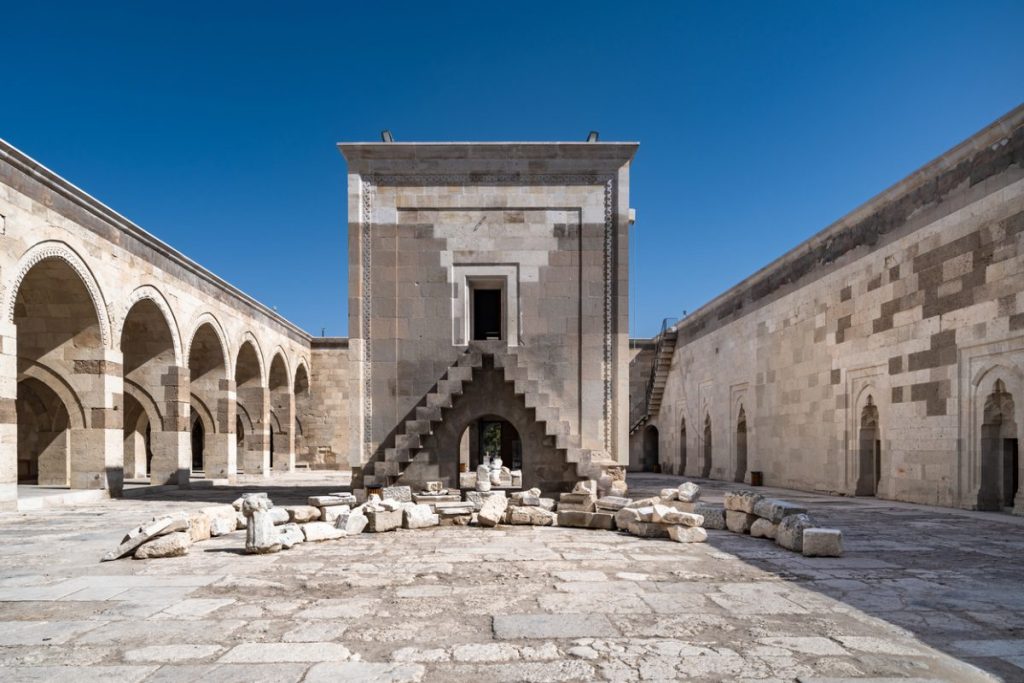Turkey’s rich and varied history is undoubtedly reflected in its architecture, to the good fortune of the traveler, who will be able to admire the most diverse and spectacular buildings and monuments. and monuments of the most diverse and spectacularThe architecture of these buildings, either inside or outside, maintaining their original function or converted into museums.
On this page we tell you what you should know about the architecture of Turkey, which you can discover in depth during our tours of the country.
Because of its importance for tourism, Turkey’s architecture deserves a prominent place in any guidebook about the country.
Here have lived Neolithic peoples of the most innovative, great civilizations of Antiquity, Byzantine Christians, Seljuks and Muslim Ottomans… and all have done their bit to shape monuments and buildings of the most symbolic nature, which have survived to the present day thanks to contemporary architecture of modern Turkey.… and all have done their bit to shape the most symbolic monuments and constructions, which have survived to the present day thanks to the contemporary architecture of modern Turkey.
Therefore, it is necessary to dedicate a section to each period and civilization, since their constructions are unique and differentiating.
However, there have also been numerous cases of hybridization and assimilationThe buildings were created for one purpose and ended up adapting to others.
But this does not detract from their value and makes them prime examples of multiculturalism.

If you like the prehistoric world and the archaeological and archaeological sites of the Metal Age, in Turkey you can visit the you will find spectacular examples.
And not only in the form of remains at ground level, but authentic constructions that are still standing and are ancestral testimonies of those who lived here millennia ago: true pioneers in the art of erecting buildings for different uses.
The most paradigmatic case is that of Göbekli Tepeconsidered the first temple in historyprobably built in the X millennium B.C..
Se ubica cerca en Sanliurfa y de la frontera con Siria, se trata de un espectacular conjunto megalítico con grandes bloques de piedra tallada, representando quizás a sacerdotes reunidos en esta especie de templo circular.
Por razones que aún se desconocen, esta construcción fue abandonada y enterrada varios milenios después, por lo que no se puede decir que exista continuidad tipológica y estilística en periodos posteriores, al menos según la información de que se dispone en la actualidad.
Another outstanding example of Turkey’s most remote architecture is that of Çatalhöyuknear Konya, considered by many experts to be the oldest city in the world. the oldest city in the worldbuilt as far back as 6,500 B.C..
Como es lógico, el paso de los milenios se ha llevado por delante la mayor parte de las construcciones y lo que queda original en pie son los zócalos de sus viviendas y edificaciones.
Pero eso ya cuenta con un enorme valor histórico que ofrece interesante información sobre los modos de vida primitivos para estos precursores del Neolítico.
Además, en el recinto se han realizado reconstrucciones y recreaciones para ilustrar al visitante sobre el interior y los acabados de las casas de esta increíble ciudad.
Entre lo más llamativo de ellas es su entrada: se accedía a través del tejado.
No less interesting are the beehive houses that can be discovered in the southeast of Turkey in Harranalso near Sanliurfa.
They are mud and straw houses of small size and arranged in rows, in which its most outstanding and characteristic element are its conical cupolas supported by a framework of wooden beams.
They began to be built several millennia before Christ and are one of the first examples of sustainable architecture, since it takes advantage of the existing materials in the environment and is really effective to insulate from heat: when outside the thermometer exceeds 40º or 45º, inside a stable environment is maintained at 20º or 25º.
But if there is one iconic civilization in pre-Greek Turkey, it was the Hittite (17th-12th century BC). Hittite (17th-12th century BC)..
Y su capital, HattusaThe Hattusa, as well as other cities in the heart of its domains (Central Anatolia) offer outstanding examples of the most ancient architecture of Turkey.
In Hattusa, its walls of large stone blocks with sculpted lions impress and give us samples of the constructive sophistication that this town reached.
The same is true of Alca HöyükThe city is another essential stop on this journey through the oldest architecture of the country.
For example, for its imposing Sphinxes Gate or its royal tombs, even before the classical period of the Hittite empire.

When talking about Turkey’s architecture, one of the aspects that most surprises travelers is the enormous wealth of Greco-Roman monuments and constructions.
Not surprisingly, the Anatolian peninsulaThe Anatolian peninsula, especially the coasts of the Aegean Sea, were key territories for the civilization of Ancient Greece, and their successors, the Romans, maintained or expanded most of these settlements.
From about the 7th century B.C.In this territory, rich cities began to proliferate, and within them (or in their immediate vicinity), large temples and iconic civil constructions for Greek society, such as theaters, agoras, propyleums, nymphaeums and a long etcetera.
These are buildings that stand out for their balance and elegancefollowing the rules of the different periods (Doric, Ionic and Corinthian orders), with large columns, lintels and pediments. columns, lintels and pediments as the main elements of the structure, and richly decorated with sculptures of great subtlety.
Although wood and adobe were used as building materials, stone (limestone and marbles) was also widely used in Greek architecture in Turkey. stone (limestone and marble)This has made it possible for many of these constructions to be maintained over time, most of them in ruins but preserving an evocative touch of monumentality that has influenced all subsequent artistic epochs.
The ancient Greeks, in fact, knew how to assimilate and improve different techniques and ideas of immediately preceding or contemporary civilizations, such as Egyptian architecture.
And so did their successors: the Roman Empire developed an architecture based on the Greek one but with its own advances, especially the systematic use of the round arch, the dome semicircular arch, the dome and materials of enormous durability, such as Roman Roman concrete (opus caementicum).
This allowed the Romans to undertake great public works such as dams and aqueducts, and transport infrastructures such as bridges and roads that connected practically the entire empire, including its easternmost domains, which are those related to the Anatolian peninsula and the Mediterranean Levant.
In addition, the Romans were responsible for the origin of a type of construction that was later widespread, especially in Islamic civilizations: the Roman baths, which later became the Turkish baths.
Examples of Greek architecture and Roman architecture in Turkey are numerous, and often overlap due to reuses and extensions of the latter, making it difficult to identify a building to one period or the other.
For this reason, we opted for the term ‘Greco-Roman’, which has left us authentic masterpieces for the architecture of Turkey, such as:
It must be said that the Greek period in Turkey cannot be understood without forgetting the nearby Greek islands of the Aegean Greek islands of the AegeanBoth the island and mainland populations were part of the same civilization (albeit spread across different city-states and kingdoms).
And that is why there are so many parallels between the sites on either side.
At present, they are spread over two different countries (Greece for the vast majority of the Aegean islands and Turkey for the mainland settlements and the odd island).
Therefore, if you are particularly interested in getting to know this type of architecture, we recommend you to book a combined trip to Turkey and Greece, aboard unforgettable cruises that sail the waters of this sea full of history.

As we told you in the History pagepage, the Byzantine Empire was the heir of the Roman EmpireAfter its division into two (Eastern and Western) and the fall of the Western empire with its capital in Rome, the Eastern part of that empire continued with its capital in Byzantium (called Constantinople, today’s Istanbul).
Thus, they maintained and developed Roman models, but with their own distinctive contributions.
One of the characteristics of this architecture is the construction of Christian temples and the disappearance (or reuse in many cases) of pagan temples, after Christianity became the official religion of the empire.
The great prototype of the Christian temple was the basilica (by evolution of the Roman civil basilica), but unlike the Paleochristian basilicas of the western part of the Roman Empire (with a longitudinal plan), here the ones with a Greek cross plan and, above all, those with a centralized plan achieved greater spectacularity. Greek cross plan and, above all, those with a centralized floor plan..
The latter made it possible for the dome on pendentives to never-before-seen heights in terms of spectacularity.
As materials, brick and stone were combined in the structure, while for the interior decoration, brick and stone were used. interior decoration interior decoration mosaicsThe mosaics, which are also an evolution of those used by the Romans, but now to cover domes, vaults and other interior spaces, gave Byzantine constructions an unmistakable character.
There are iconic examples of this architecture, in some cases somewhat distorted by their later use as mosques.
Undoubtedly, the zenith of Byzantine architecture in Turkey is the Hagia Sophia in Istanbulbut no less interesting is the church of St. Savior of Coraalso in Istanbul, in both cases from the sixth sixth century.
But the Byzantines did not only build temples, far from it: they remained great engineers, for example in hydraulic matters, as can be understood by contemplating the imposing Basilica CisternThe Basilica Cistern, the largest of the 50 or so that Byzantium (Istanbul) had for subway water supply: its size is equivalent to that of a great cathedral and its architectural conception is not without artistic taste, with carved pillars, capitals and sculptures.
At the same time, in eastern Turkey, the style of its buildings departs from Byzantine postulates and falls within the framework of what is known as Armenian architectureStructures made entirely of stone, often in volcanic tuff, and topped by pointed domes.
Although this is not exclusively Turkish architecture (interesting temples can be found on the other side of the border), in Turkey one can admire examples such as the Akdamar church (from the 10th century) or the ruins of Ania medieval city of great importance that was devastated by an earthquake in the 14th century.

This architecture, developed by the first first Turkic people who settled in the country as a result of their migration from the East. migration from the East, represented an important change with the previous constructive modes: although they used some techniques typical of the ancient Greeks of Anatolia, the Seljuks brought with them typical Persian decorative elements. typical Persian decorative elements, such assuch as kufic calligraphy and intricate geometric and vegetal designs in stone.
Given that this civilization developed between the between the 11th and 13th centuriesparallel to the last centuries of the Byzantine Empire, this architecture is to be found in central and eastern Anatolia and is closely related to other notable examples in Iran, Uzbekistan or Turkmenistan, among other countries.
The most common types of Seljuk architecture in Turkey were mosques and madrasas (Koranic schools), but also caravanserais (buildings for lodging, rest and overnight stay for travelers and animals of the caravans), related to the Silk Road, which they themselves were responsible for promoting.
For those interested in this architecture of Turkey, some must-see places to visit include Konya (Alaeddin Mosque, which houses tombs of Seljuk sultans), Sultan Han (in Sultanhanı, a magnificent 13th century caravanserai), Divriği and Erzurumin the latter two cases for their interesting kale mescidi (citadel mosques), smaller and with a more complex floor plan, based on vaulted galleries.
But in this period we can also speak about the Artuquid architecturemade by this other Turkic people, rival and ally of the Seljuks, who settled in southeastern Anatolia. southeastern Anatolia.
La importancia que dieron a la guerra y la defensa queda demostrado por la imponente ampliación de las walls of Diyarbakiras well as significant contributions in Hasankeyf (old bridge, still in operation) and at Mardin.
The Ottoman period is, perhaps, most influential and decisive for the architecture of Turkey, and also for many other surrounding countries that, centuries ago, were dominated by this empire.
Since this is a very long period ( from the 14th to the 20th century), we can speak in turn of different periods within Ottoman architecture, but all of them with aspects in common, especially the integration of influences from other previous or contemporary civilizations, such as Byzantine, Seljuk and Persian, but with a twist of its own to associate it with the new power.
At first, the epicenter of this new Ottoman architecture was located around the first capitals: Bursa and Edirne. around the first capitals: Bursa and Edirne. Later, after the conquest of Constantinople Constantinople (1453)The new capital, now called Istanbul, took its place.
And it reached its highest peaks with the masterpieces of the architect Mimar Sinanwho worked mainly for Sultans Suleiman the Magnificent and Selim II.
If there is one building that is indisputably associated with Ottoman architecture, it is the mosque, and in particular the great mosque with its central dome. Great Mosque with its central domeThe mosque was built with semi-domes and vaults linked to it, creating a spectacular interior space, diaphanous and illuminated with a mystical play of light and shadows, thanks to the rays of sunlight that enter through the windows of this dome system.
This model of mosque was inspired by the Hagia Sophia in Istanbul (which, in fact, eventually became a mosque as well), and offers numerous beautiful examples to visitors to Turkey, both in terms of its architecture and its architecture. in Istanbul (Blue Mosque, just in front of Hagia Sophia, Sehzade Mosque, Suleiman Mosque, Rüstem Pasha Mosque, New Mosque or Yuni) as well as in other important Ottoman cities (Selim Mosque in Edirne).
In addition to the large central dome, another distinctive feature of Ottoman mosques are their slender and numerous minarets (minarets). numerous slender minarets (minarets)..
Estos minaretes se caracterizan por su estructura circular y estilizada, con uno o varios balcones de 360º a distinta altura y rematados por terminaciones cónicas.
Normalmente aparecen dos o cuatro, rodeando por completo a la mezquita, pero en algunos casos excepcionales también hay seis, como en la Mezquita Azul de Estambul.
In terms of civil and residential civil and residential architectureIn addition, multi-storey buildings are also iconic in which the ground floor is made of stone, but the upper floors could employ other materials and wooden structures, often slightly overhanging and supported on corbels.
Many of these traditional Ottoman houses can be found in cities such as Safranbolu or Amasyabut also in many other destinations throughout the country.
The classical period of Ottoman architecture gave way in the 18th century to the so-called ‘Turkish Baroque’, a type of architecture in which the European, particularly French, influence European influence, particularly FrenchThe European style was more evident, largely due to the trips undertaken by local architects to the Old Continent.
It can be seen in interiors decorated with curved lines, scrolls and ornaments everywhere, but also in facades of more European taste. This is especially evident in large civil civil constructionsIn the mosques there was a certain nostalgia or respect for the great classical works of previous centuries.
Thus, we can cite some of the most spectacular examples, such as the Dolmabahçe Palace and Çırağan Palace..
This decorative profusion became more sober towards the end of the 19th century, under the influence of a certain Western neoclassicism, but this eventually led to what some experts call a ‘revival’ of classical Ottoman architecture. revival’ of classical Ottoman architecture, which, together with the need to which, together with the need to construct large modern buildings, gave rise to a style with an eclectic air.
This eclectic style acquired its maximum expression at the beginning of the 20th century, especially at the time of the formation of the Republic of Atatürk.
Por ello, se concibió como un auténtico estilo nacional.
Algunos ejemplos icónicos son la gran estación Sirkeci de Estambul, cabecera de la mítica línea Orient Express, y la Oficina Central de Correos, también en Sirkeci, Estambul.
Special mention should be made of the yali: luxurious summer mansions that the high society had built on the seafront, to the point of rising above the shore itself.
Usually made of wood and of several floors, they show an elegant and refined facade, the most famous being those of the Bosphorus Strait.
Although the first ones date back to the eighteenth century and some of them were still being built in the twentieth century, its heyday was in the nineteenth century.
The construction boom of the mid-20th mid-twentieth century, rationalist and functionalIn the mid-20th century, residential and office buildings proliferated everywhere, as well as large and sturdy monuments in the service of the new republic, such as the Monument of the Martyrs of Çanakkale (participants in the battle of Gallipoli) and the Anit Kabir of Ankara (Atatürk’s mausoleum).
But since the end of the last century Turkey has seen the emergence of more futuristic and contemporary buildings, often linked to the economic and financial sector.
Examples of this contemporary architecture in Turkey are the airport at Esenboga in Ankara or the skyscrapers of the Levent district in Istanbul. Unsurprisingly, Levent is home to the tallest buildings in the country: the Istanbul Sapphire and the İş Bankası Tower 1, measuring 238 meters and 181 meters, respectively.
Parallel to this new trend of futuristic architecture, which employs advanced materials (aluminum, glass, etc.) and integrates the new premises of environmental sustainability, an awareness of conservation and restoration of Turkey’s architecture from previous centuries has also developed, largely driven by tourism.